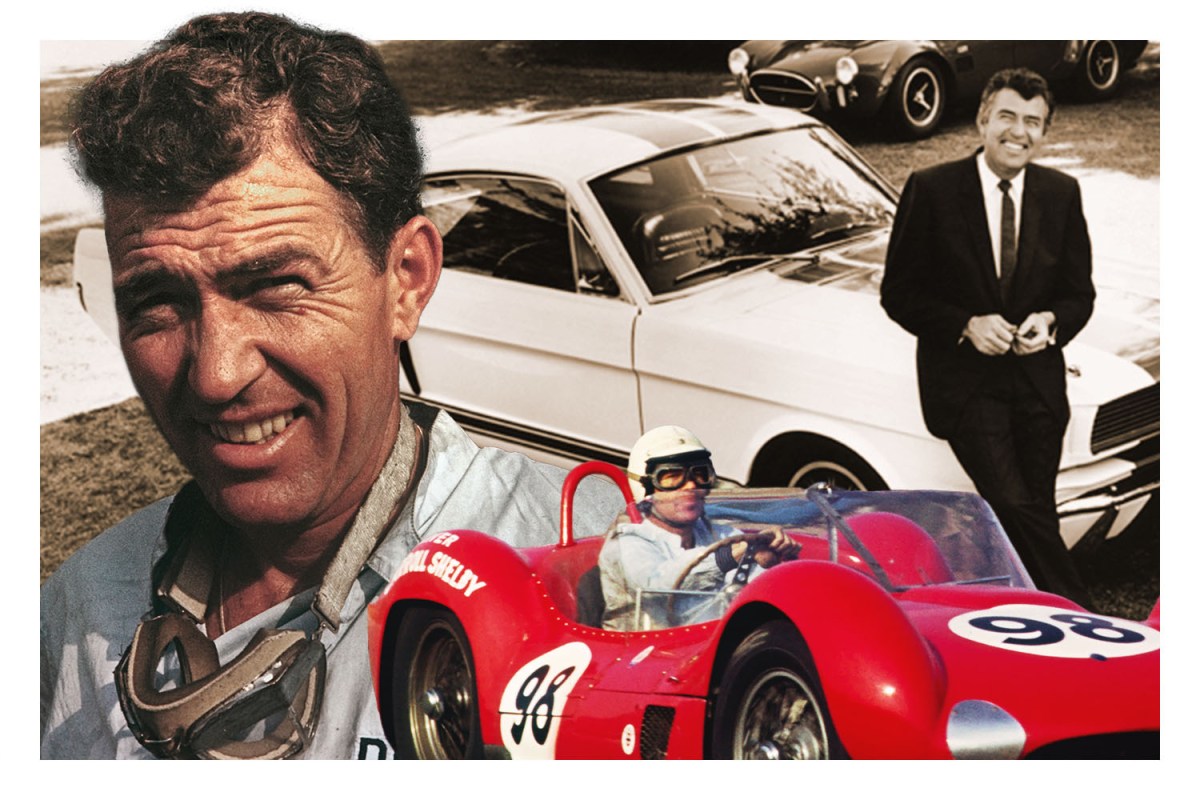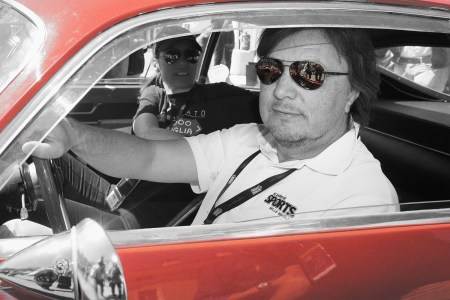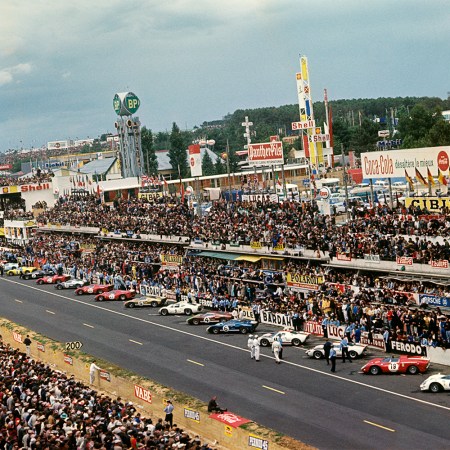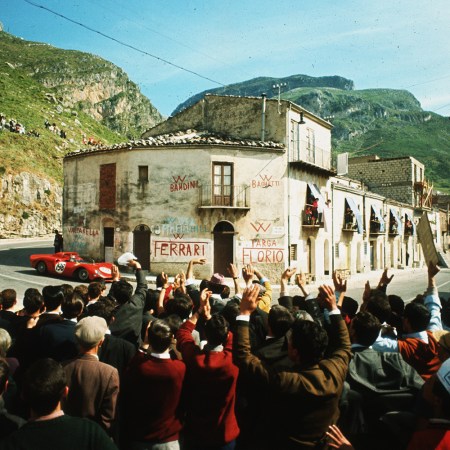Aaron Shelby recalls the time his grandfather started appearing on magazine covers. ”[As a pre-teen], I hadn’t really gauged his significance to the U.S. car world. But those covers had me thinking, ‘Whoa, who is this guy? What did he do?’ and asking him more questions. Actually it was him who taught me to drive when I was 12. A couple of hours getting used to the stick shift and then onto the skid pan and slalom out on the lot. It was a great way to learn.”
Aaron’s grandfather was Carroll Shelby, a race car visionary, and the man whose engineering and stylistic tweaks not only made an icon of one sports car — the AC Cobra — but also the Shelby Daytona Coupe and the Shelby Mustang. These days, many know his name from the 2019 movie Ford v Ferrari: that’s Carroll Shelby played by Matt Damon.
“I think Ford v Ferrari definitely put his name back in the spotlight, though at first I couldn’t see a short guy from the Northeast playing a tall, lanky Texan,” Aaron laughs. “But Matt really did a good job of getting Carroll’s bravado across, his determination to push forward and just make it happen. I think a lot of people new to Shelby around that time probably didn’t know Carroll’s contribution to U.S. racing history either.”
Aaron is hoping to play some part in resurrecting his grandfather’s reputation further. A Dallas banker by day, and — carrying the torch for the Shelby name — a director of and brand ambassador for Carroll Shelby International for the last seven years, he says this year is an opportunity to make a splash. It’s the 100th anniversary of Carroll Shelby’s birth, something being celebrated over the coming months across the country and beyond.
The company is marking Carroll’s anniversary in several ways, among them taking out of storage a number of his most important cars — like the MG TC in which he won his first track race — for rare displays at events the likes of Houston’s Keels & Wheels in May; the annual Mid America Ford and Shelby convention in Tulsa, Oklahoma in June “is going to be huge this year”; and later, in September, the U.K.’s annual Goodwood Revival will honor Carroll Shelby with a showcase of his cars. Carroll both raced at Goodwood and later returned to the track as a manufacturer.
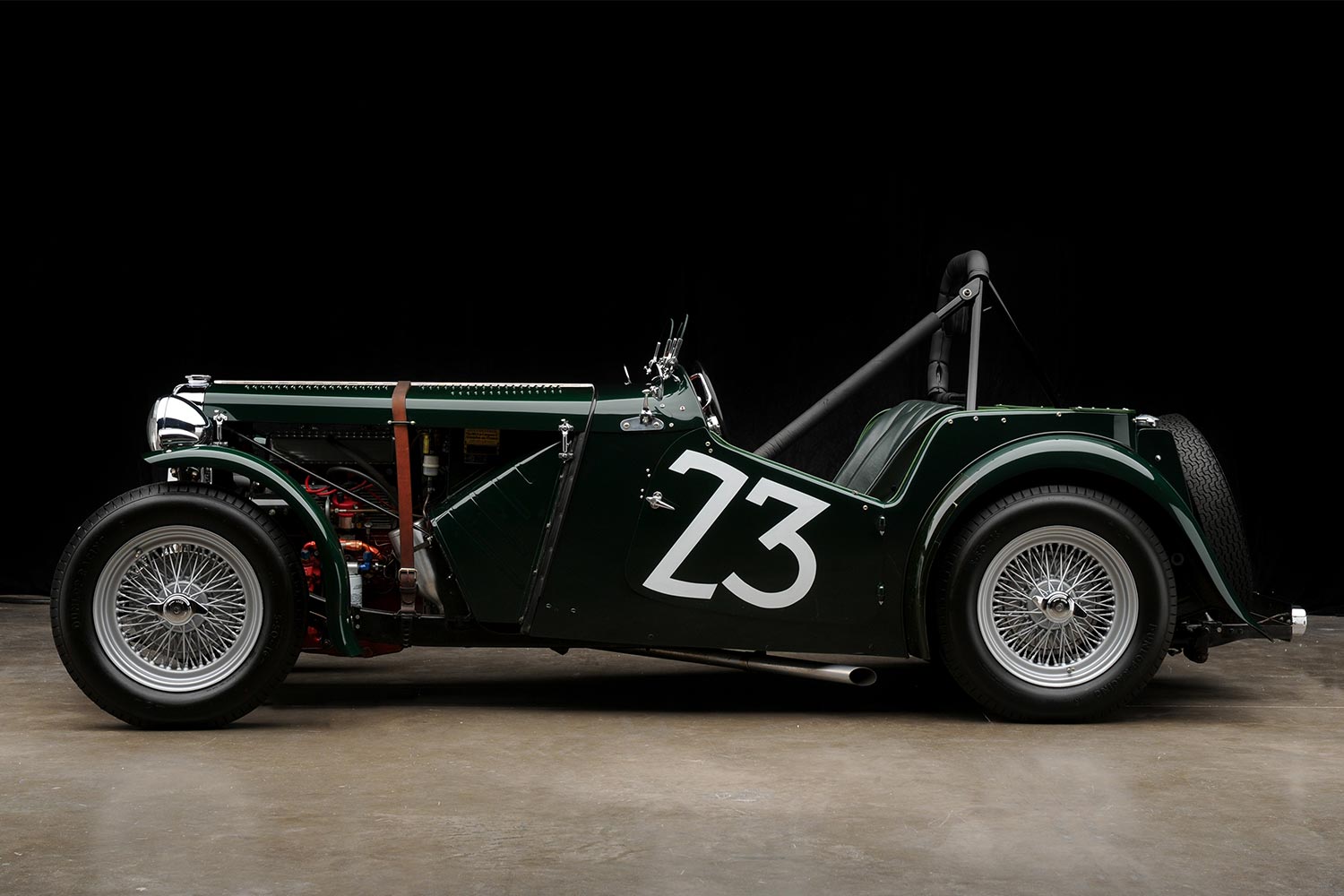
There are potential licensing deals in the pipeline too, “and I don’t mean like Harley-Davidson, where you see the name planted on everything,” stresses Aaron. The company has had a Shelby-branded watch deal with Baume & Mercier in the past and currently has one with Breitling.
Perhaps most exciting of all, Shelby American, a subsidiary of Carroll Shelby International, has launched an edition of 100 commemorative supercharged Shelby Mustangs. The bad news? “We sold out of those in 36 hours,” says Aaron, not sounding even remotely sorry for the fact. “Still, it’s a great way to mark his anniversary.”
Carroll Shelby, who died in 2012 at the age of 89, was courted by Ferrari, among others, to race for them. The height of his racing career came in 1959 when he won the 24 Hours of Le Mans for Aston Martin alongside Brit Roy Salvadori, but he also took three national sports car championships and set land speed records at the Bonneville Salt Flats. When a heart condition nixed his racing career, he turned to making cars for other drivers, combining massive horsepower with clever engineering, and leading to a lifelong relationship with Ford in the process.
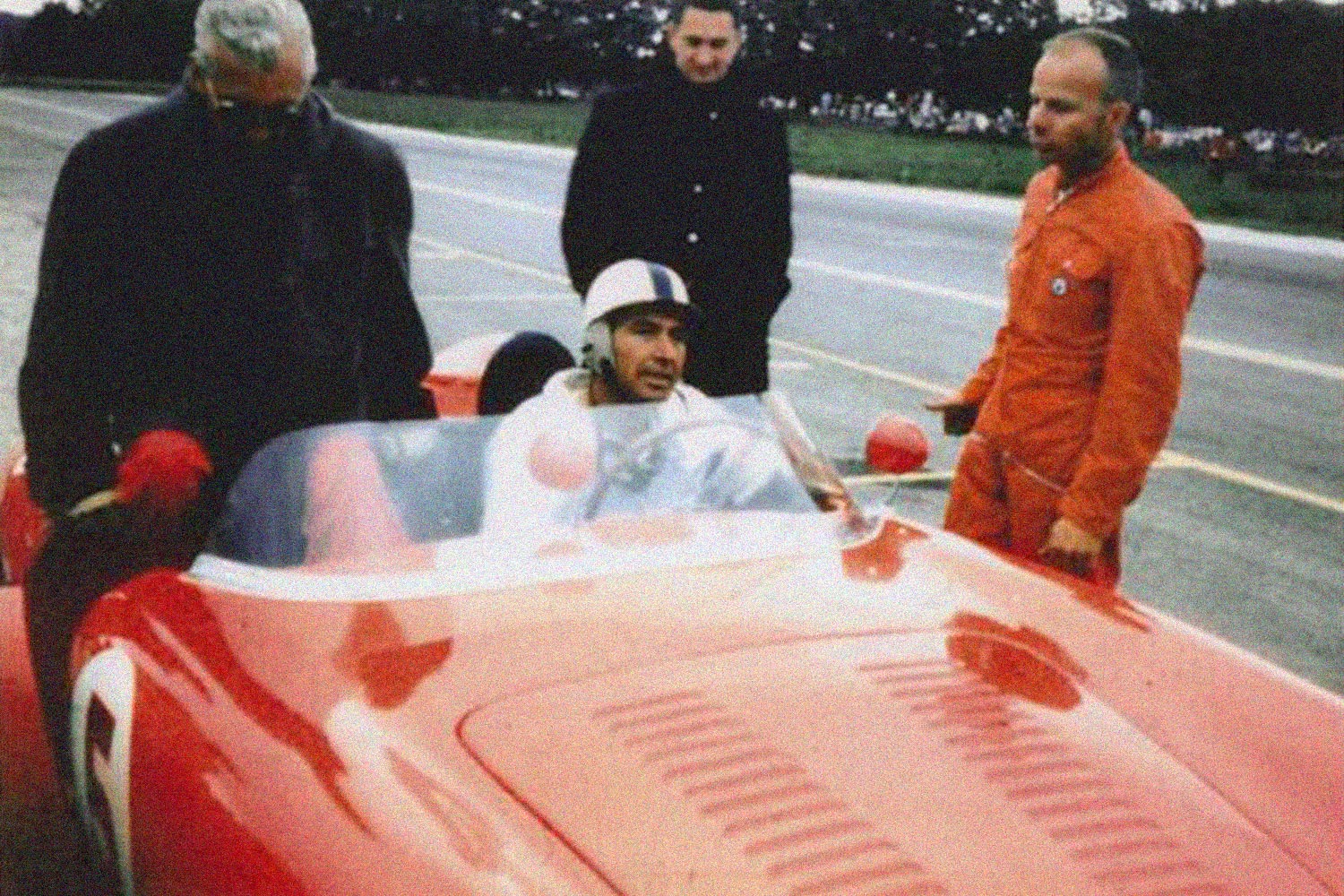
In that phase of his career, Shelby achieved wins in the FIA World Sportscar Championship with the Shelby Daytona Coupe, and captured the overall win at Le Mans in back-to-back years with the Ford GT40 (the first, in 1966, being the climax of Ford v Ferrari). In fact, Carroll is the only person to win Le Mans as a driver, team manager, team owner and race car builder. He would go on to become a manufacturer of road-legal Shelby-ized takes on the Cobra, Mustang and other more muscular cars.
“Carroll was always very much forward-looking himself, but I think today as we look back we’ve started to reassess him as one of the icons of the U.S. car business,” reckons Aaron. “OK, he’s not Henry Ford, but he has his own niche in being the only person to succeed as a driver, manufacturer and team owner as he did.”
After 100 Years of Classic Cars, Andrea Zagato Is Ready for 100 More
Catching up with the CEO of the legendary Italian firm that has put its stamp on vehicles for Aston Martin, Rolls-Royce and MaseratiThat’s why Aaron thinks of his grandfather not simply as a car designer, nor an automotive engineer either; maybe as something closer to a race car innovator. If many steered clear of working with Peter Brock’s truncated aerodynamic design for the Daytona Coupe — “they just thought it was too ugly,” says Shelby — Carroll saw the potential.
“By the time they got it to the track and it was 30 mph faster than the Cobras, that brought a change of heart. Oh, maybe it’s not so ugly after all,” says Shelby. “Carroll was all about whatever made the car cross the finish line first. If it didn’t look that good, he didn’t mind at all.”
Indeed, Shelby proposes that at heart his grandfather was an entrepreneur who might have worked in any other industry. Carroll only took to racing full-time when limberneck disease ruined his chicken farm. Leaving late to race one day and still wearing his farming clothes, the resulting publicity regarding his unusual attire led him to adopt striped bib overalls as his signature style.
In the late ‘60s, Carroll was an East Texas rancher who enjoyed an annual cook-off with his neighbors, becoming known among them as much for his homemade chili seasoning as for his racing. So he started to package some bottles up and sell them through local grocery stores and by 1980 had opened a factory in Dallas to make the product on a larger scale. Four years later, Kraft bought the brand from him. You can still find Carroll Shelby’s Chili Kit (“Fix it hot or mild”) on grocery store shelves.
“He loved to cook, but because health issues meant he’d lost a lot of his sense of taste he liked really big flavors. Well, he was a big experimenter and I recall that sometimes his dishes worked and sometimes not, much like his business life,” Aaron laughs. “If the cars hadn’t worked out I could have seen him with his own cookery show on TV. He just had the Steve Jobs type of mind that allowed him to understand things even if they weren’t his specialty, to find the right people to do what he wanted to do even if he couldn’t. The focus on cars was simply because he loved speed.”
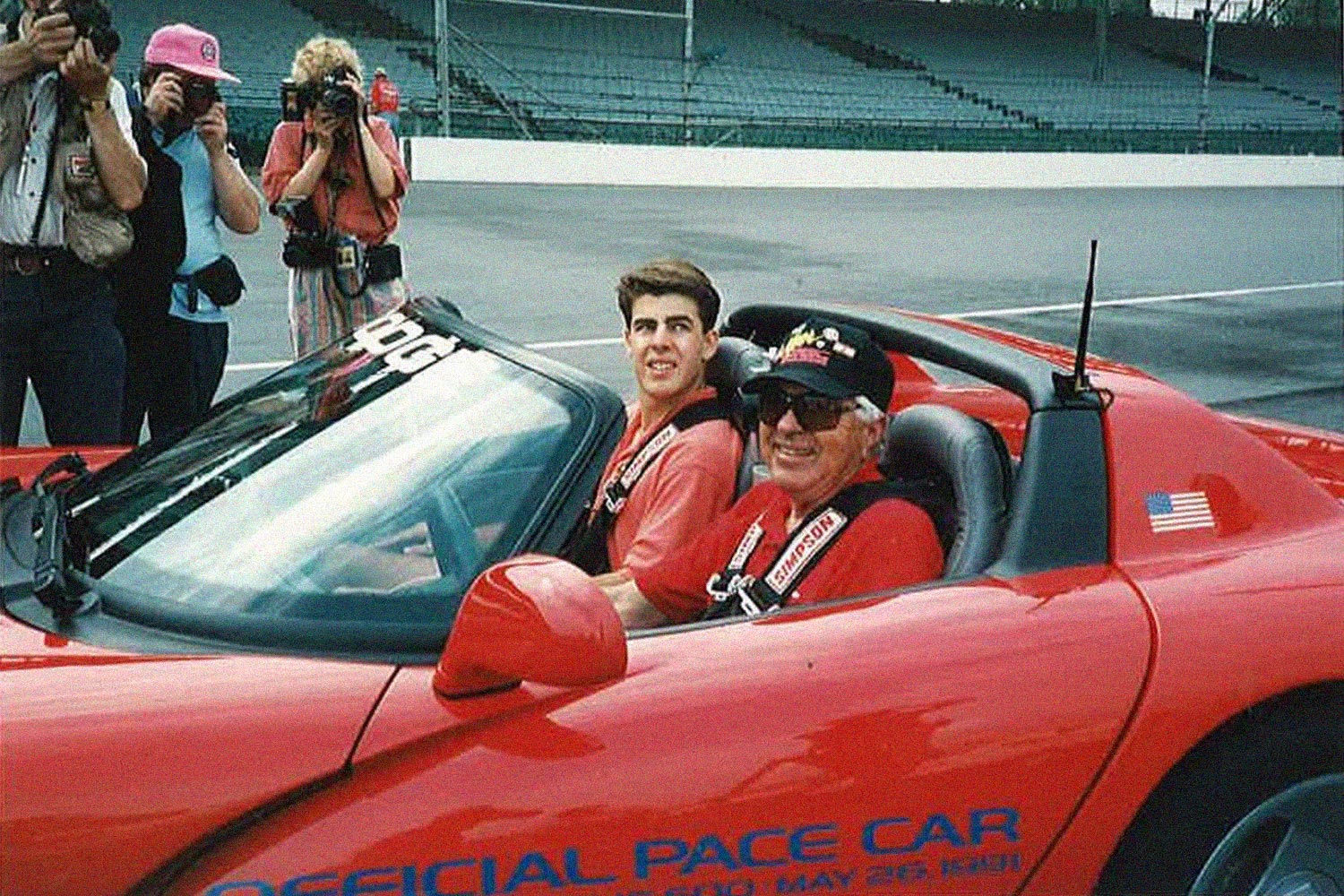
That’s perhaps why you shouldn’t be thrown by the fact that three-quarters of the business that carries his name is now focused not on sports cars — the Shelby Super Snake or the GT500KR — but on trucks, notably Shelby versions of the Ford F-150. Practical trucks still sell hugely across the U.S., while very fast, thirsty and less useful vehicles are facing environmental and economic pressures, so that all makes commercial sense.
“But it surprises people that Carroll just loved trucks too. He saw them as an exciting platform to work on and, since he spent a lot of time at his ranch, he had a fleet of trucks [to get around],” Aaron explains. “He’d have a team in Las Vegas tinker with them. He had one supercharged truck that just looked like a typical pickup. He’d mosey along the highway until some Porsche or Lamborghini came up and then he’d just take off and leave them in the dust. He loved that kind of thing.”
“He surely got a lot of speeding tickets,” he adds. “And he no doubt talked his way out of a lot of them too. He really was quite the charmer.”
Whether you’re looking to get into shape, or just get out of a funk, The Charge has got you covered. Sign up for our new wellness newsletter today.
